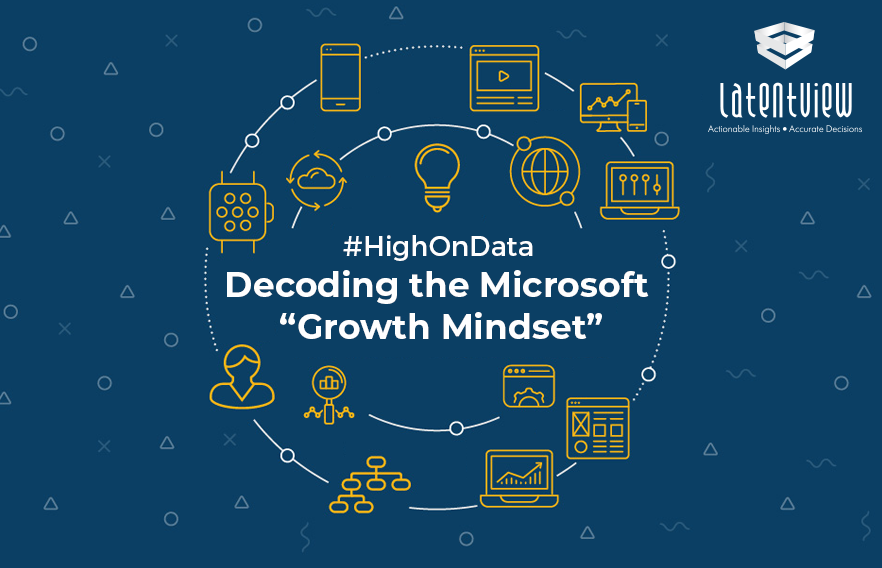Reed Cundiff, General Manager, Customer & Market Research, Microsoft, talks to LatentView Analytics about how the company is powering through their digital transformation journey by familiarizing stakeholders with the new tools, embracing a more experimental approach and how AI & ML are playing a pivotal role in automating the insights generation processes.

Reed Cundiff
General Manager, Customer & Market Research, Microsoft
Excerpts from the interview:
1. Digital Transformation has been a focus for organizations over the recent past. What does this actually mean and how have your teams approached this journey?
When you think about Digital Transformation in the insights industry, it’s about harnessing the power of new data streams and modern technologies to inform strategic business decisions with greater quality, speed and at greater volume. When speaking about my team’s Digital Transformation, I like to use the analogy of an insights supply chain. In terms of inputs, we can now tap into a huge variety of data sources, including primary market research, social media data, telemetry data, financial transactions, etc. Each data source can tell us something unique about how our customers and markets are thinking and acting. The real power of all of this data can be realized when it is harmonized within a data platform. This is the ‘factory floor’ of the insights supply chain. Beyond harmonization, modern technologies such as Machine Learning and AI play a huge role in automating insights generation processes. Analyses that took hours or days to perform in the past can now be executed within seconds! The third component of the insights supply chain is our outputs. Digital Transformation empowers teams to deliver insights with greater flexibility and speed. For some of our tracking studies, we’ve moved away from static monthly PowerPoint reports to real-time data that is served up in a Microsoft Power BI dashboard. Outputs like these enable stakeholders to quickly filter and get to the data views they need, and this in turn helps stakeholders make decisions with increasing speed with which businesses demand today.
When it comes to my team’s Digital Transformation journey, we’ve recognized that we are entering uncharted territory. There isn’t a well-tested roadmap that we can simply adopt and follow step-by-step to achieve success. Instead, we are embarking on a lot more experimentation, so making mistakes and learning from them is essential to our journey. At Microsoft, we call this ‘Growth Mindset,’ and to me, it’s the most critical capability a team can possess if it is going to innovate and advance its discipline.
2. How does Digital Transformation and the changing landscape influence established processes and traditional Market Research methodologies?
Compared to a couple of years ago, we’re thinking a lot more expansively about the data we can access and use to answer business questions. A part of our job today is to seek out, deeply understand, and maximize the value we can extract from new data sources. To effectively use multiple data sources to answer a single business question, we will need, in some cases, to join otherwise disconnected data sets. This need has implications for data standardization and governance, data harmonization and the data platform and analytic tool infrastructure that can support modern analyses.
As for traditional market research methods, we are looking at opportunities to evolve in this area as well. For example, my team has been working with members of the market research supplier community to evolve our surveys to perform equally well across PCs, tablets and smartphones. Recently, we developed a mobile-first approach for Decision Choice Modeling (DCM) surveys. In the beginning, everyone told us that DCM design was too complex and simplification would sacrifice data quality. We’ve successfully completed a consumer audience study and found results similar to the traditional approach. And when given the choice, 74% of survey participants took the survey on a mobile device! So the appetite for modern methods exists among survey participants as well.
3. What are some of the most challenging aspects in having your team and stakeholders embrace the Digital Transformation journey?
On both fronts, I’d say the biggest challenge is breaking well-worn habits. A great example of this is when stakeholders have business questions that can be answered by a single data point. Team members have traditionally severed as data gatekeepers, so when simple questions have come up, they would work with our suppliers to retrieve that data needed by stakeholders and email it back to them. Now that we can deliver real-time data directly through a Power BI dashboard, team members have had to let go of the belief that serving up data points is a part of being a valuable insights partner. When they do, they realize that they have gained back time that they can devote towards more complex business issues that have greater business impact.
For stakeholders, the adjustment is developing the new habit of self-serving data from Power BI dashboards instead of firing off an email to a member of our team. Familiarizing stakeholders with the new tools they have at their disposition and making them comfortable using them to answer day-to-day questions takes an initial investment of our team’s time up-front, but the payoff in time savings for both parties is huge!
4. Of all the data sources you utilize in CMR, have you seen a gradual shift in the importance of any specific data source? And how does one create an integrated approach to utilizing the insights gained from them?
I could pick any one of the data sources we use today and talk about how it has grown in importance over time. One example is social media data. In the early days, we used social data as descriptive statistics. For any specific topic or event, we would examine the volume and sentiment of social media posts over a period of time. As our understanding of what social media data can tell us, we tapped more deeply into the real value of the data source. More recently, we’ve used it to surface unmet needs that feed into product development, and we’ve experimented with using social metrics as an indicator of business performance.
We’ve experienced a similar growth in importance and value with market telemetry, especially when it is combined with other data sources such as perceptions gathered through primary market research or revenue data based on financial transactions. These combinations of data lead us to increasingly richer insights that inform marketing programs and impact our bottom line.
5. Do you have any advice for how enterprises can successfully integrate and bridge the gap between data on their consumers’ stated and actual behavior?
This is where the power of telemetry data really shines. Stated behavior is notorious for being flawed. What it actually measures is consumers’ perceptions of the things they do rather than their actual behaviors. I might like to believe that I eat a healthy meal every day, but I’m not factoring in the piece of cheesecake I had last Saturday. The beauty of telemetry data is that is measures actual behavior, so it would accurately pick up that my dinner Saturday evening was not perfectly healthy.
6. What potential does Digital Transformation hold for agile product development (personalizing products and services based on how each individual customer uses it) and how?
Digital Transformation sets companies up well for effectively serving up personalized products and services. The ability to study anonymized case-level telemetry data enables teams to understand a customer’s interactions with our products and services and offer a more personalized experience aligned to his or her needs. As I mentioned earlier, the most powerful insights come together when you can combine behavioral data with perceptions. It’s one thing to understand that a customer used a product or service; it’s much more actionable to know whether they were satisfied (or not) with the product or service they just used.
Digital Transformation also provides insights teams with an opportunity to engage in in-market test-and-learn experiments. Through our customer lifetime value practice, we’re leveraging product usage and revenue data to discover opportunities to increase customer engagement with our products and services. With marketing stakeholders, we’re launching targeted campaigns to raise awareness of specific products among a group of customers who might find it useful. From these experiments, we are starting to learn more about the marketing that works well, as well as where we can be more effective.





